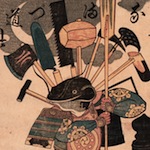|
nonathlon posted:That's the one. I misremembered the title. No it isn't, edit your post. 1491 and 1493 are legit history books by Charles C. Mann. 1421 etc are bullshit about China discovering the world by Gavin Menzies.
|
|
|
|

|
| # ¿ Apr 26, 2024 05:39 |
|
twistedmentat posted:This reminds me of a video i watched about Neolithic Europe. It was interesting, and they talked about how a fairly advanced civilization existed in the Balkins, BUT then it said "Who probably invented writing because they used these pictographs, but mainstream scientists say they're not a written language". Though Isn't language easy to identify? Like You see repeating patterns that you can see even if you don't know the language. Like Conjunctions will stand out because they are some of the most common used things in languages. This is why the Vonyich Manuscript is so interesting because it clearly does have these patterns, but remains unreadable. But then it closed out by uncritically accepted the Bosnian Pyramids and welp, out went all their credibility. There's a difference between written language and repeated meaningful symbols. Think of numbers, icons on a map, or those little pictures on menus that tell you how spicy something is or whether it's vegetarian. These have specific, easily-interpreted uses, but you can't write a sentence in any of them. You can see this kind of proto-writing on seals from Harappa, for instance, and this is probably how written language evolved. Fictional example: a king's scribe records how much tribute the vassals need to deliver. Say North province needs to give 50 goats and 400 sacks of grain. The scribe writes: (arrow pointing up) 5 10 (little picture of a goat) 4 100 (picture of sack) (ear of corn). Over time the pictures get simplified, the system gets more complex, someone adds in grammar words, and you've got a writing system. If (arrow pointing up) starts to mean the N sound becaus eit means "north", (goat picture) means a G sound, and so on, you've got something like an alphabet. The issue is that it's very hard to tell which one of those an unknown inscription represents, especially because there might be several different kinds of symbols in the same text. https://en.wikipedia.org/wiki/Proto-writing
|
|
|
|
twistedmentat posted:Yea, its not unlike say the symbols used on Board Games like 7 Wonders. Once you know what the symbols mean you can effectively understand what the meaning is. Though this video took the symbols used in this Balkin civ and directly compared them to cuneiform, which is a writing system. Yeah, just pointing out that deciding what is and isn't writing is harder than it seems.
|
|
|




